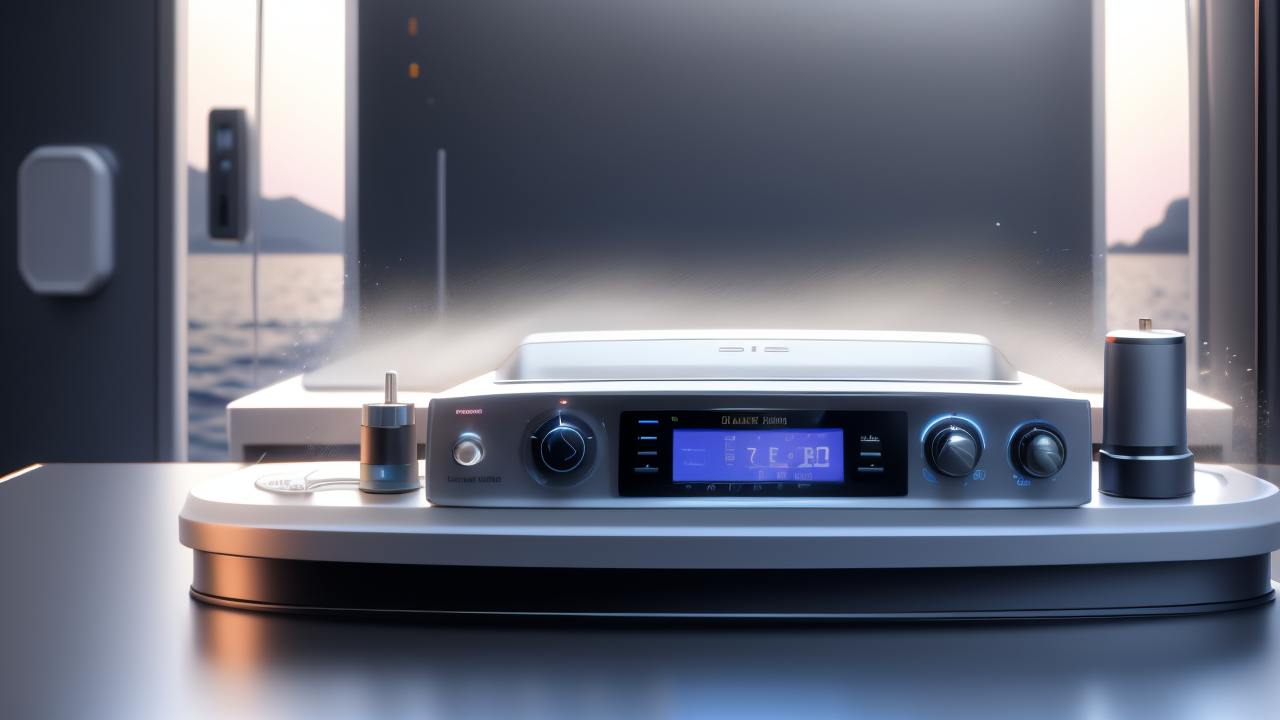Introduction to Marine Two-Way Radios
The Importance of Reliable Communication at Sea
Marine two-way radios are vital for safety at sea. They allow boaters to call for help in emergencies. These radios also help with navigation and weather updates. Without them, sailors would be isolated and at risk.

Reliable communication can save lives in rough waters. It keeps crews connected with shore and other vessels. Marine radios are often the only link to safety in remote areas. They're essential for both recreational boaters and commercial ships.
Key Features of Marine Two-Way Radios
Marine two-way radios have unique features for use at sea. They're waterproof and built to withstand harsh conditions. Most have floating designs to prevent loss overboard.
Key features include:
- VHF (Very High Frequency) channels for marine use
- DSC (Digital Selective Calling) for automated distress signals
- GPS integration for location tracking
- Weather alert functions
- Noise-canceling technology for clear audio
These features ensure clear, reliable communication in marine environments.
The Evolution of Marine Radio Technology
Marine radio tech has come a long way. Early systems were bulky and limited. Modern radios are compact and feature-rich.
Digital tech has improved range and clarity. Handheld units now offer features once found only in fixed mounts. Integration with other onboard systems is now common.
Smart features like Bluetooth connectivity are emerging. This allows for smartphone pairing and extended functionality. The focus remains on reliability and ease of use in critical situations.
Evaluating Different Marine Two-Way Radios
Comparing Price Points and Specifications
Marine two-way radios vary in price and features. Basic models start around $50, while advanced units can exceed $500.

Key specs to compare include:
- Transmit power (1-25 watts)
- Battery life
- Channel capacity
- Display type and size
- Additional features (GPS, floating, etc.)
Higher-priced models often offer better range and more features. However, basic units can still meet essential safety needs. Consider your specific boating activities when choosing.
Assessing Range and Reliability for Long-Distance Communication
Range is crucial for marine radios. It depends on several factors:
- Transmit power
- Antenna height and quality
- Weather conditions
- Terrain
Most handheld VHF radios have a range of 5-10 miles. Fixed-mount units can reach 20+ miles. For longer ranges, consider SSB (Single Side Band) radios.
Reliability is about consistent performance in all conditions. Look for radios with good reviews for signal clarity and durability. Test the radio in various conditions before relying on it for critical communication.
Durability and Design: A Look at Build Quality
Marine radios must withstand tough conditions. Look for:
- IPX7 or higher waterproof rating
- Shock-resistant construction
- UV-resistant materials
- Non-slip grips
Floating designs are ideal for handheld units. This prevents loss if dropped overboard. Some radios even have automatic water activation features.
Consider the ergonomics and button layout. You should be able to operate the radio easily, even with wet hands or in low light. Large, backlit displays are helpful for visibility in all conditions.
Best Practices in Selecting Marine Two-Way Radios for Boating
Understanding the FCC Regulations on Marine Radios
The FCC regulates marine radio use in the US. Key points to know:

- A license is required for international waters
- No license needed for domestic recreational use
- Certain channels are reserved for emergencies
- Proper radio etiquette must be followed
Familiarize yourself with these rules before operating a marine radio. Proper use ensures clear channels for emergencies and efficient communication for all.
Tips for Choosing the Right Radio for Your Vessel
Consider these factors when selecting a marine radio:
- Boat size and type
- Typical cruising range
- Budget
- Desired features
For small boats, a handheld VHF radio may suffice. Larger vessels benefit from fixed-mount units with higher power. Consider a backup handheld for emergencies.
Match the radio's capabilities to your boating habits. If you often travel far from shore, invest in a long-range system. For coastal cruising, a standard VHF radio is usually adequate.
Future-Proofing Your Marine Radio Investment
Marine radio technology continues to evolve. To future-proof your investment:
- Choose radios with software update capability
- Look for models with expandable features
- Consider compatibility with other onboard systems
Some newer radios offer app integration and smart features. These can enhance functionality and ease of use. However, prioritize reliability and core communication functions over cutting-edge features.
Remember, a marine radio is a safety device first. Choose a model that meets current needs but can adapt to future requirements. Regular maintenance and updates will ensure your radio remains effective for years to come.


